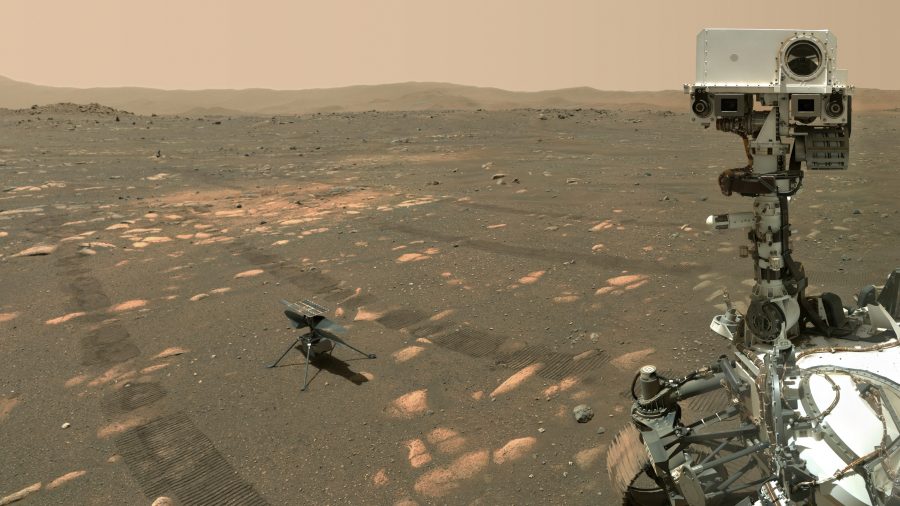By — Danny Kistner
Photo Credits — NASA/JPL-Caltech/MSSS
NASA’s Perseverance rover once again made history several days ago as it captured both video and audio from the surface of Mars of another spacecraft flying nearby, that being the Ingenuity helicopter, something that has never before happened in human history. As Ingenuity flew for the fourth time on the surface of Mars, Perseverance stood watch with one of its two microphones and its Mastcam-Z imager, one of the most advanced cameras to be put on a rover and sent to another planet.
This microphone, which belongs to the SuperCam laser attached to the rover, zaps rocks from a distance, so that their chemical composition can be figured out through a spectrometer. The microphone on the SuperCam can pick up these strikes, as well as martian ambiance, like the wind that can be heard in the YouTube video posted of the flight, which can be viewed below. A Soundcloud audio file, also from NASA, picks up on the hum of Ingenuity’s helicopter blades, which they isolated so that they could be better heard over the sound of the Martian winds and gusts.
Similarly, and more recently, Perseverance has begun to use its robotic arm to start the process of exploring Mars’ Jezero Crater, which was once a great lake. Scientists hope to use the rocks in the crater as a starting point, and though the rover lacks a rock hammer as any geologist on earth might use, Perseverance will use its robotic arm to instead grind the surface of the rocks so that its internal composition and structure can be revealed.
Two other tools, the PIXL (Planetary Instrument for X-ray Lithochemistry) and SHERLOC (Scanning for Habitable Environments with Raman & Luminescence for Organics & Chemicals) will then allow for the more detailed gathering of chemical information, from with scientists at NASA hope to learn whether or not ancient life can be found within the rocks, as well as what kind of rocks they are in the first place. This process has only been made harder with the surface of mars being covered in greatl layers of sand and dust, but the aforementioned process is a solution for exactly that.
The PIXL, which has an X-ray so exact it can pinpoint and separate a grain of salt from a group of other minerals, will allow for NASA to collect and then keep its most important and promising samples. All thanks to this lunchbox-sized box at the end of the rover’s arm. SHERLOC, on the other hand, will work in tandem with WATSON, Perseverance’s high-powered camera, to study the surface of Mars and map out where certain minerals and molecules are, specifically those that are the carbon-based building blocks of earth.
These samples will then be deposited within metal tubes, which will be stored on the surface of Mars and brought back on a separate mission to Earth. What those samples actually hold however, and their clues to life on Mars, remains a mystery still.






